While PCIe expansion cards have always offered a great way to augment the capabilities of your PC, the average user doesn't bother with them. Most of the features they need on their modern computer are already present on their machine. However, if your PC is considerably old, or you picked a relatively cheaper motherboard to save costs, PCIe cards suddenly become very attractive. You can bring Wi-Fi to a motherboard that shipped without it, increase the number of USB and SATA ports, get a higher bandwidth NIC, or get fast charging USB-C ports on your PC.
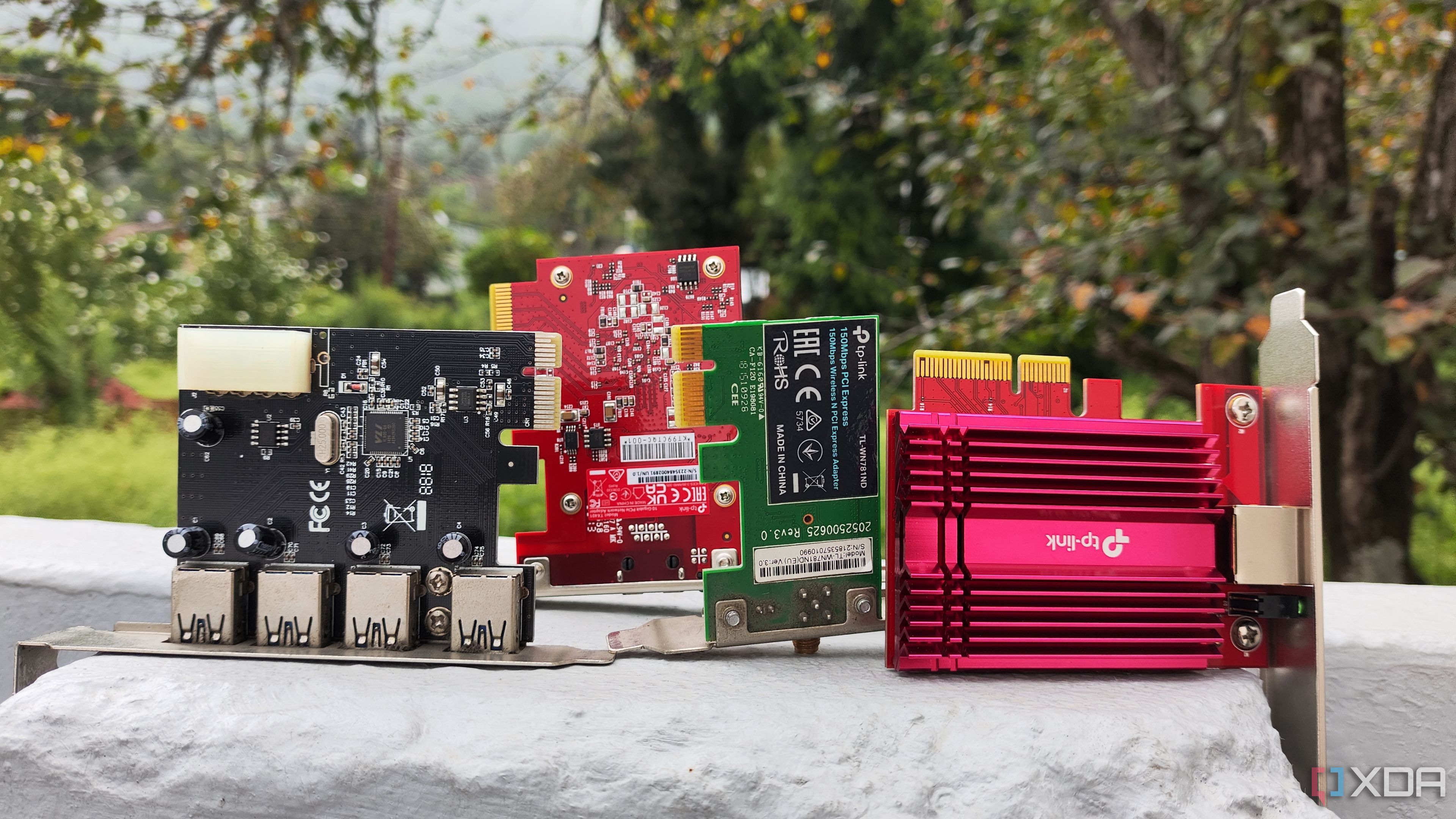
Related
5 of the most useful non-GPU devices you can plug into PCIe slots
Put your vacant PCIe sockets to good use with these handy expansion cards
5 USB expansion card
Stop removing your devices
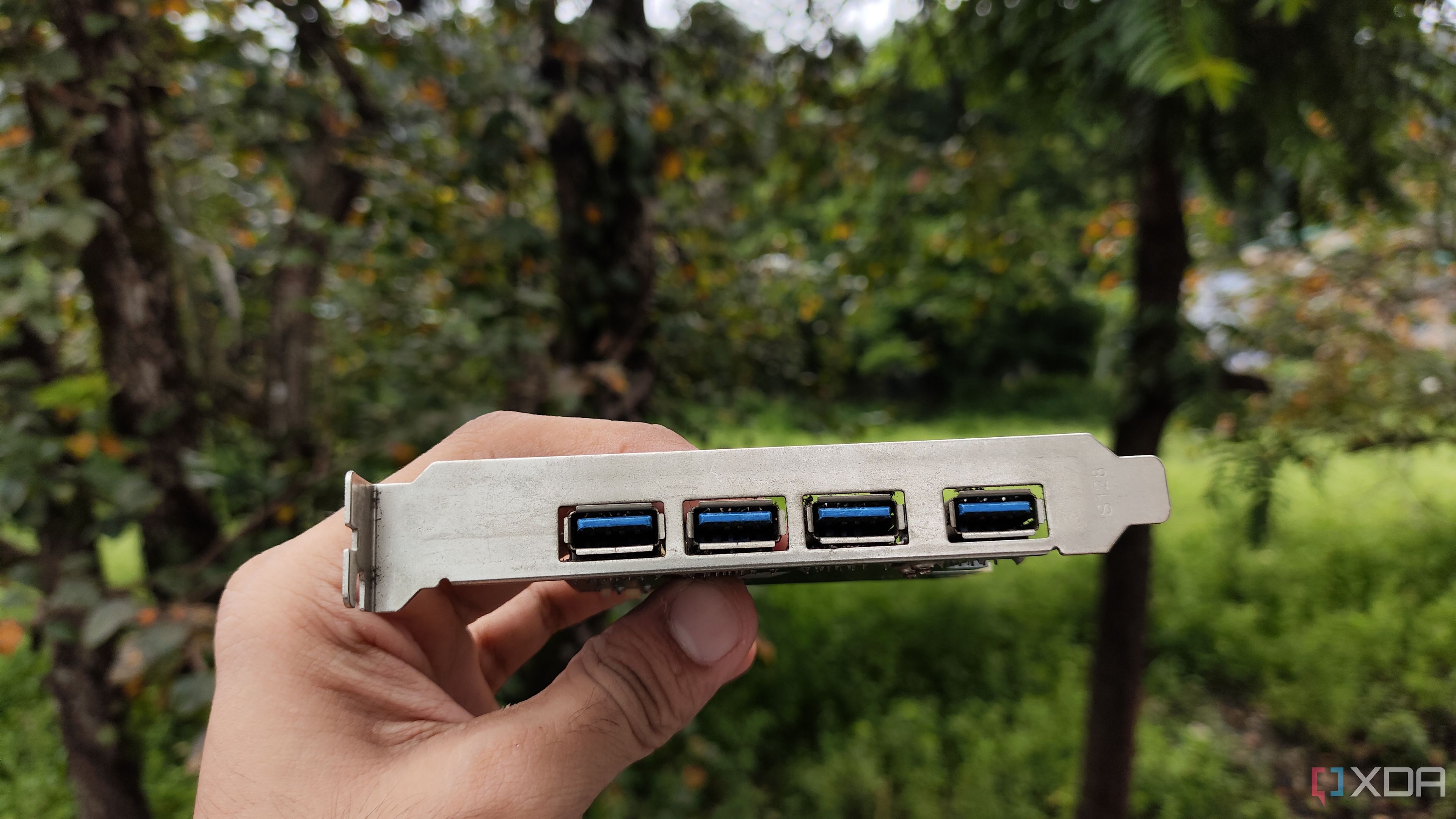
Robust I/O isn't really a strong point of budget motherboards, and if your machine is ancient, chances are you're constantly struggling to plug in all your USB peripherals at the same time. A PCIe USB expansion card is a cheap and quick solution, making use of that vacant PCIe x1 slot. Instead of getting a USB hub to get more ports, an expansion card makes full use of the USB bandwidth, avoiding performance degradation. Adding more USB ports not only allows you to connect more wired peripherals, but also devices like external storage drives and VR headsets.
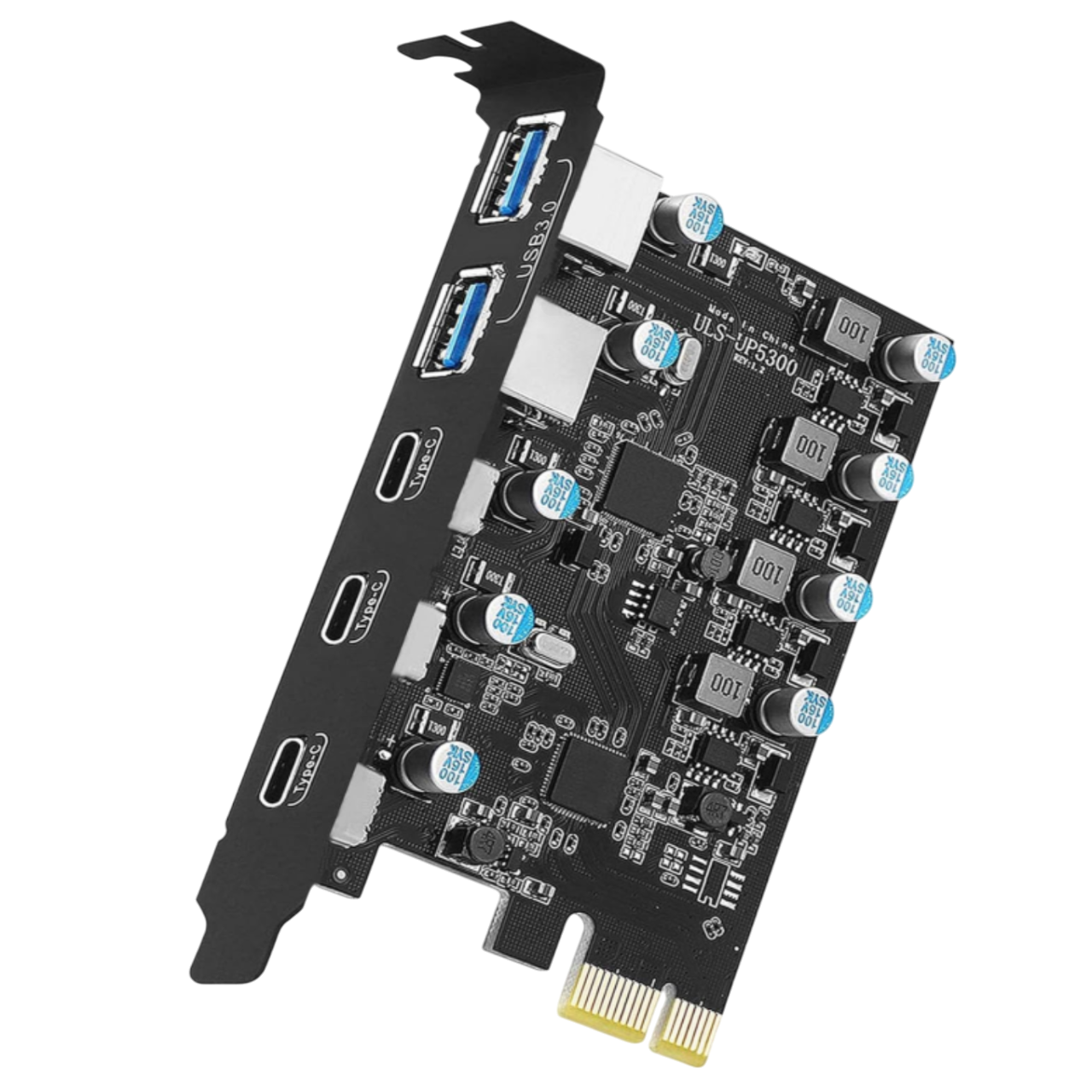
This PCIe-to-USB card provides you with 5 additional USB ports, three of which are USB-C. You get USB3 (5Gbps) speeds by installing this card in the PCIe x1 slot of your motherboard.

Related
4 genuinely useful PCIe add ons you can get for your PC
Use these 4 genuinely useful PCIe expansion cards to add extra functionality to your PC
4 SATA expansion card
Hoard as many hard drives as you want
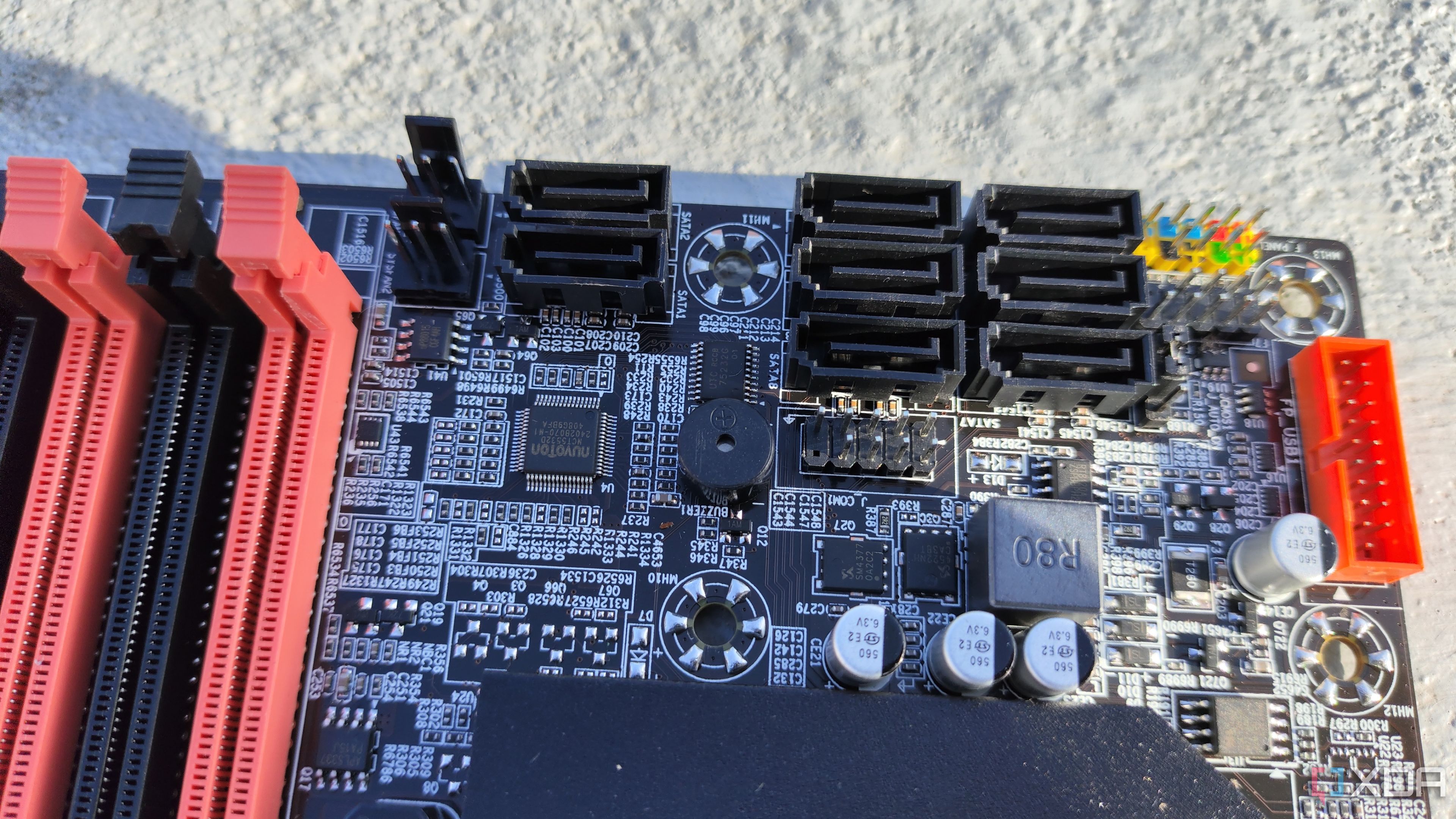
Usually, the number of SATA ports on a motherboard is sufficient for the average user. For instance, my B550 motherboard has four SATA connectors, only one of which is currently in use for my old SATA SSD. That said, many users can run out of SATA ports, especially the data hoarders among us, and a PCIe-to-SATA expansion card can avoid the hassle of buying a new motherboard or larger drives.
Home lab enthusiasts need tons of storage, and if they're using their primary PC to double up as their home lab, they need all the SATA ports they can get. While PCIe-to-NVMe cards are also an option, they work best with a full PCIe x16 slot. And if your PC is old enough not to have M.2 slots, booting from an NVMe SSD connected to an adapter might be impossible. Hence, a PCIe-to-SATA adapter works best for older systems.
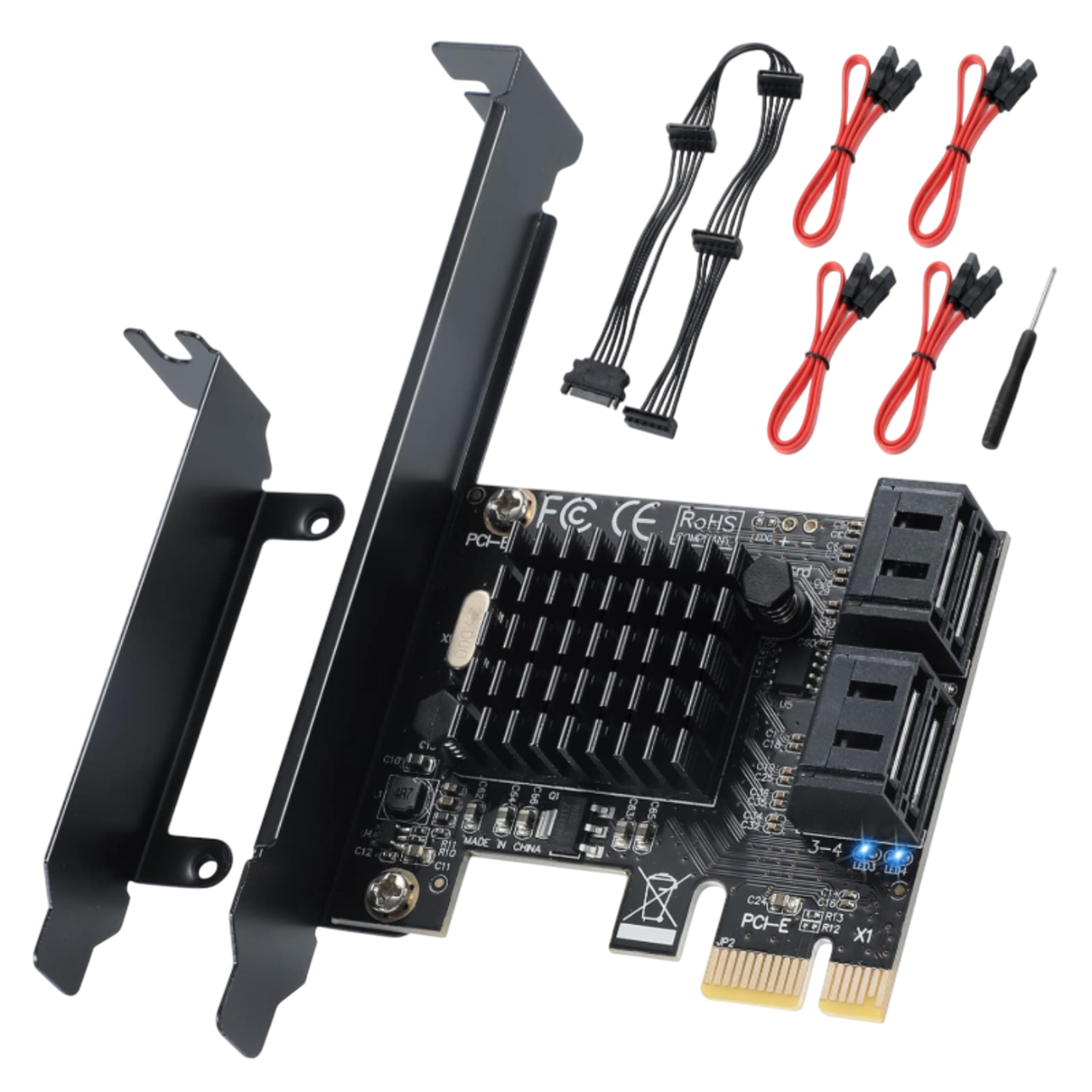
This PCIe 3.0 to SATA 3.0 adapter can bring additional SATA connectors to your PC without worrying about a new motherboard or buying larger drives.
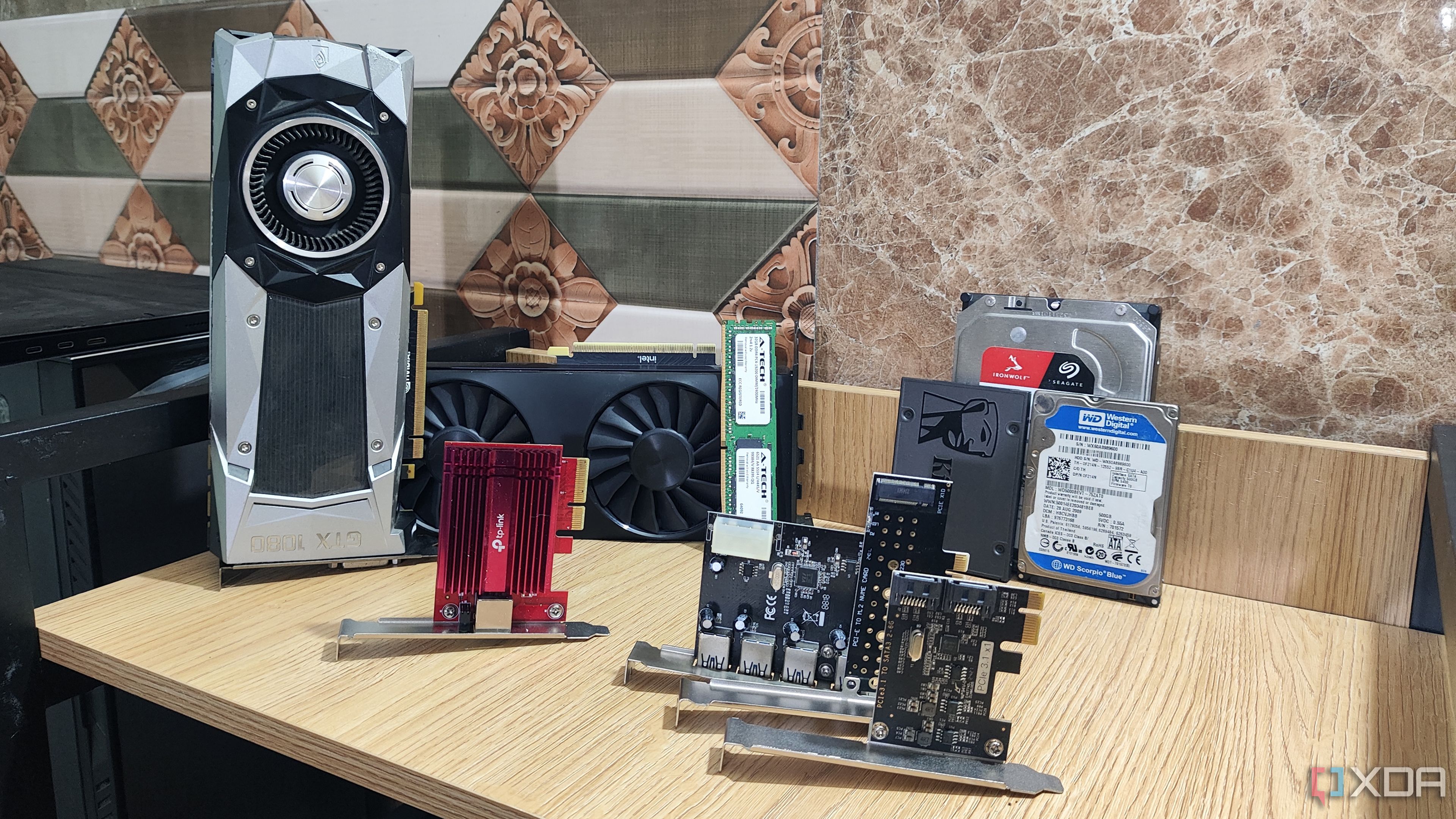
Related
5 of the best upgrades for your home server PC
Level up your home server's capabilities by arming it with these useful components
3 USB-C Power Delivery card
Make your PC your one-stop battlestation
While a USB expansion card can provide you with additional USB-C ports, it might not provide fast charging speeds for your smartphone or laptop. A PCIe expansion card with USB-C Power Delivery (PD) ports can bring 45W and even 100W charging speeds to your system, which should be enough to rapidly charge any of your devices. A lot of people don't like to use charging docks on their desks, wanting the capability integrated into their PC. Well, a USB-C PD card can do exactly that without costing you more than $50-$60.
2 Wi-Fi and Bluetooth cards
Ditch the impractical LAN cable
Even today, many budget motherboards don't have onboard Wi-Fi, so your old PC is highly likely to be missing this critical feature. Instead of thinking about a new motherboard, and possibly a whole new PC, you can simply plug in a PCIe Wi-Fi expansion card to bring wireless internet to your existing motherboard. Many Wi-Fi cards come with integrated Bluetooth as well, so you can connect your wireless keyboard, mouse, and headphones to your PC.
It's not always practical to run an Ethernet cable from your router to your PC, so having a Wi-Fi 6 or Wi-Fi 6E connection on your PC comes in handy, at least for most use cases. Even for gaming, most people don't need a wired connection as long as their internet plan is fast enough to provide sufficient wireless speeds.
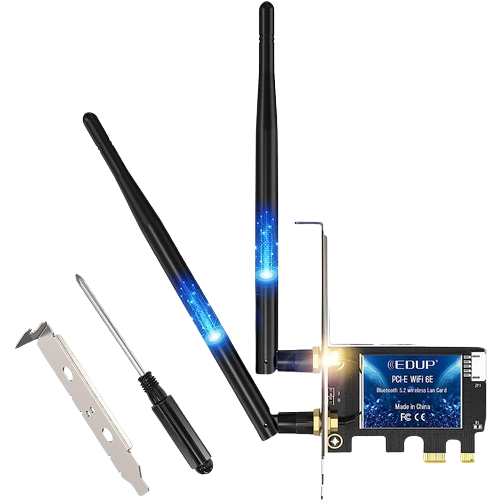
The EDUP PCie WiFi 6E adapter offers a cost-effective solution with Wi-Fi 6E speeds, Bluetooth 5.2, and a tri-band configuration, but may require careful driver management during installation.
1 2.5GbE or 5GbE Ethernet card
Get up to speed
Many older motherboards have to make do with 1Gb Ethernet compared to modern motherboards that come with 2.5GbE or 5GbE ports. While this is still more than enough for most users, considering the average internet speed, power users who need home lab capabilities often need higher bandwidth. Even those with a home NAS can easily bottleneck a 1GbE connection, so a PCIe NIC with 2.5GbE or 5GbE can be incredibly useful for old motherboards.
10GbE might be overkill, but 2.5GbE and 5GbE are becoming fairly common among home lab users and enthusiasts. You don't need to buy a new, high-end motherboard for the privilege, so as long as you have a powerful enough connection, an Ethernet expansion card can be one of the best additions to your old PC.
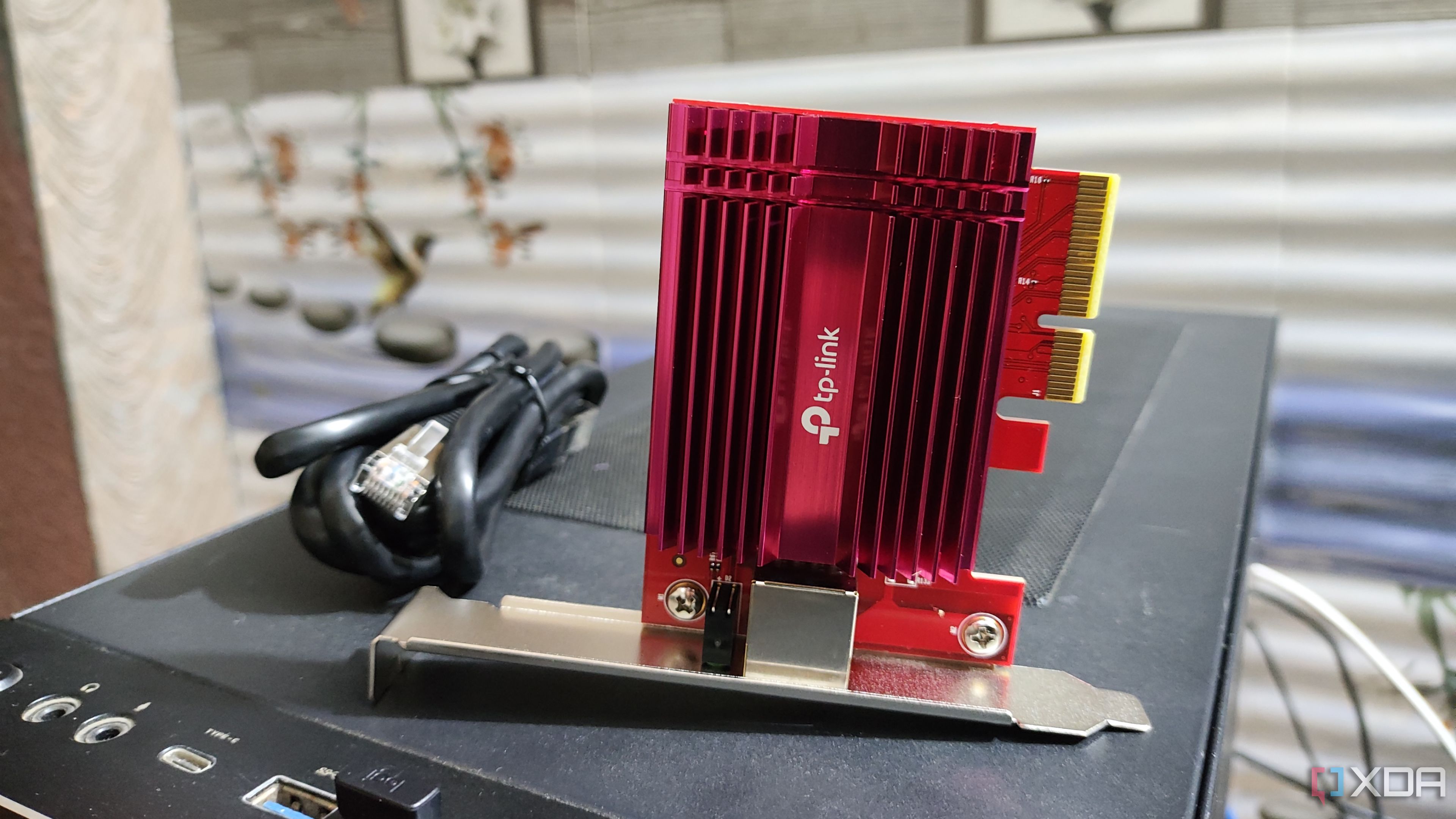
Related
5 reasons you don't need 10GbE networking in your home office
There are some reasons you might want 10GbE networking, but for most home users, your money is better spent elsewhere.
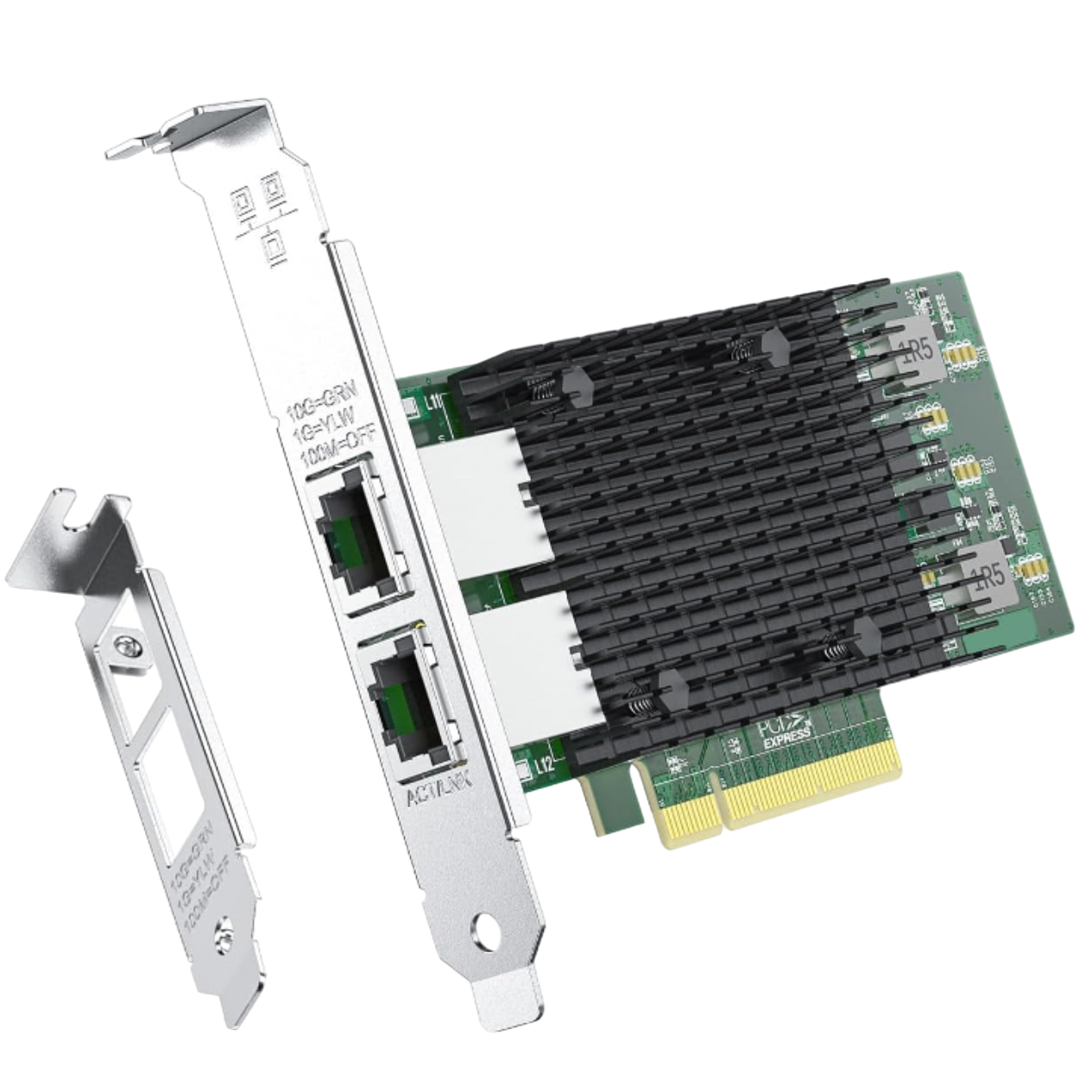
This dual 10GbE NIC is a cost-effective solution for both old PCs lacking higher bandwidth Ethernet and modern machines with 2.5GbE capabilities.
Don't upgrade your PC for a single missing feature
Older systems can start to hold you back after a point, and an expensive upgrade isn't always as easy as it sounds. So, what do you do, then? Well, PCIe expansion cards can bring many modern features to your old PC, such as onboard Wi-Fi, advanced Ethernet, fast PD charging, and an abundance of USB and SATA ports. You don't always need to go for a platform upgrade simply because a few aspects of your PC are outdated.
.png)
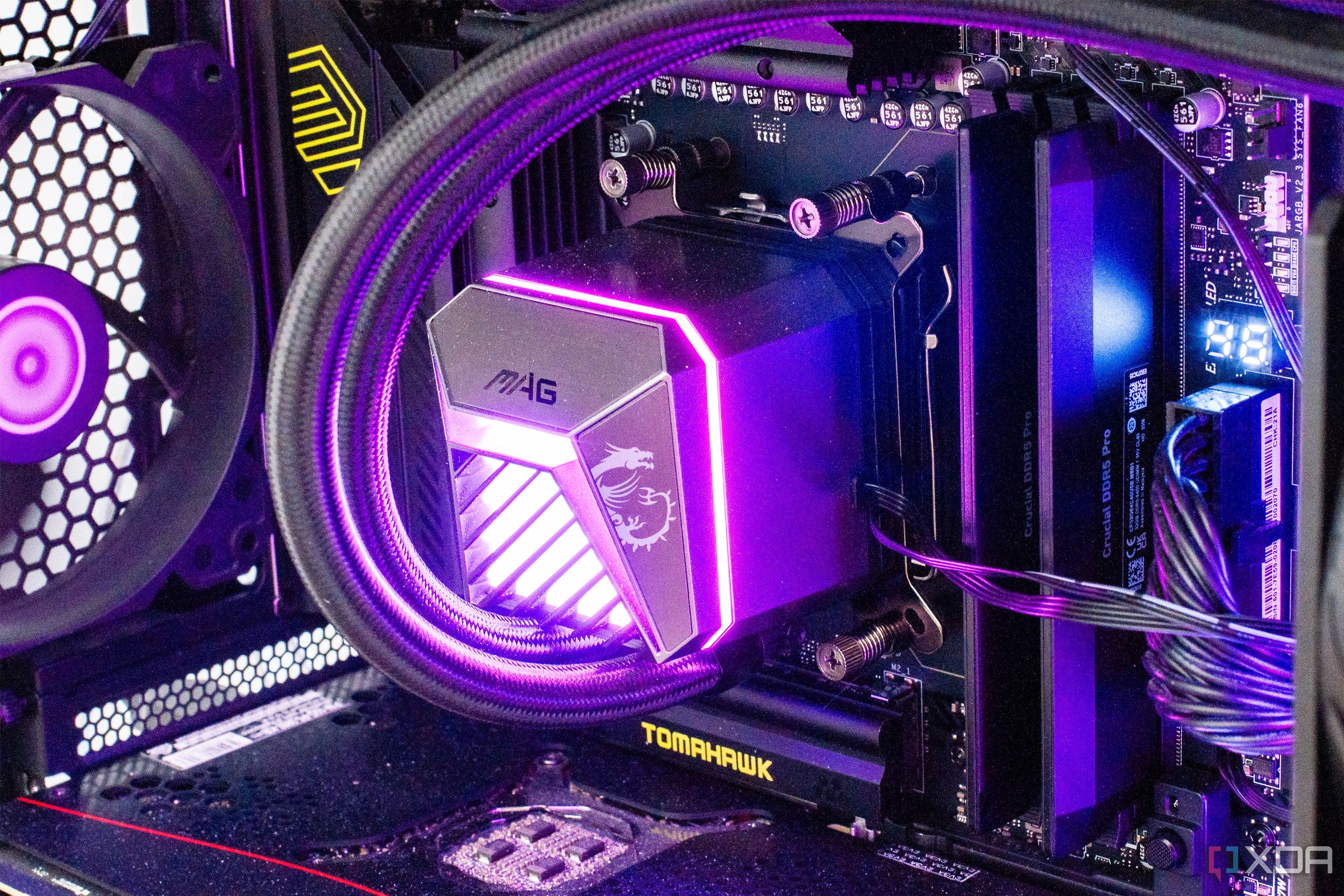









 English (US) ·
English (US) ·